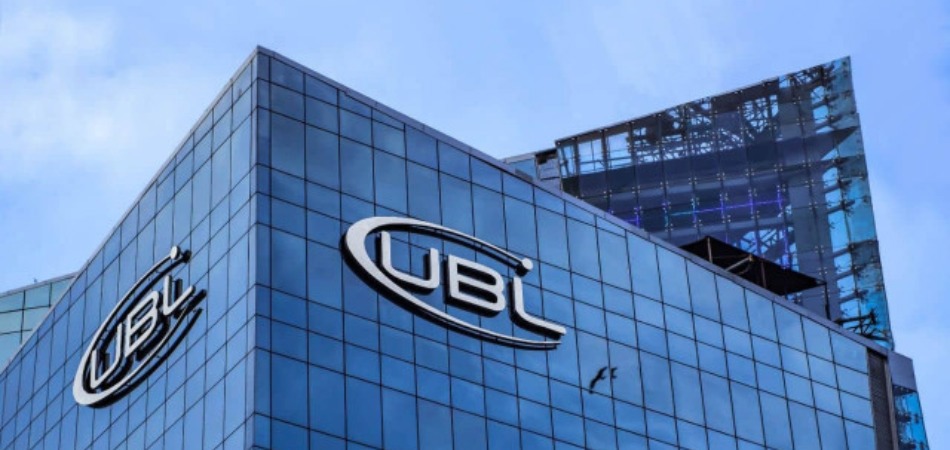IPAK IPO: Ride the Bull, But Beware the Bears

Nilam Bano | May 08, 2024 at 12:39 PM GMT+05:00
May 08, 2024 (MLN): As CY2024 brought a wave of fortune to the Pakistan Stock Exchange (PSX), already propelling companies are rushing to ride the wave of prosperity to make new highs by seeking listings.
Right after the listing of Secure Logistics Group Limited (SLGL) in April, the stage is all set to welcome International Packaging Films Limited (IPAK) to make its debut this May.
The Initial Public Offering (IPO)’s book building phase is being held on May 08 and 09, 2024 where high net worth individuals and institutional investors will subscribe to 70.1 million shares.
The book building will commence with an initial floor price of Rs 21 per share, resulting in a price-to-earnings (PE) ratio of 6.9, based on the earnings per share (EPS) of Rs 3.06 in fiscal year 2023. If the share price reaches Rs 29.4, the PE ratio will rise to 9.47.
|
FY23 |
FY24 |
FY25 |
FY26 |
FY27 |
FY28 |
|
|---|---|---|---|---|---|---|
|
EPS |
3.06 |
2.5 |
4.97 |
5.77 |
7.61 |
10.59 |
|
If share price is 21 |
6.863 |
8.400 |
4.225 |
3.640 |
2.760 |
1.983 |
|
If share price is 29 |
9.608 |
11.760 |
5.915 |
5.095 |
3.863 |
2.776 |
The above table illustrates how variations in share price, specifically Rs 21 and Rs 29.4 per share, influence the PE ratio across fiscal years from 2023 to 2028.
Based on the interest from investors during the book-building process, the strike price can rise by 40% (Rs29.4 a share), thus helping the company collect Rs2.04 billion.
After the book-building process, successful bidders will be provisionally allotted 75% of the issue size (70.1m shares). The 25% of the issue size will then be offered to retail
Unsubscribed shares, if any, of the General Subscription portion will be allocated to Successful Bidders of the Book Building portion on a pro-rata basis.
What investors should know:
Before diving into IPAK's IPO, investors should grasp the following crucial insights.
Aim of IPO- Payment of Loan
The principal objective of this IPO is to minimize debt burden by making early redemption of the long-term finance facility, employed for investment in Biaxially Oriented Polypropylene (BOPP) and BOPET facilities of Global Packaging Films (Private) Limited (GPAK) and PETPAK Films (Private) Limited (PETPAK).
This is similar to the aim of SLGL IPO wherein the company utilized Rs981.2m or 82.8% of the total pre-IPO and IPO proceeds to pre-pay and fully settle different debt facilities.
It is important to mention that despite the bullish market, the share price of SLGL has witnessed a drop of around 28% within 12 trading sessions as the trading started on April 22, 2024, whereas the index gained 2.5% during this period.
.jpeg)
Background of investment:
IPAK is currently expanding its BOPP films manufacturing capacity through its subsidiary, GPAK. Additionally, it has recently commissioned a BOPET manufacturing facility under its subsidiary PETPAK.
To finance these expansion projects, IPAK secured a long-term financing facility of Rs2,500m, which it subsequently invested in its respective subsidiaries.
Legal Proceedings:
Unlike SLGL, IPAK affirmed that, as of February 15 2024, there are no pending litigations, claims, or legal actions against the parent company, group companies, its sponsors, substantial shareholders, or directors.
There are no overdue loans (local or foreign currency) on the company, its sponsor and promoters, substantial shareholders, directors and associated group companies over which the Company has control.
Financial Snapshot:
In FY2023, the company reported a profit after tax of Rs1.64bn as compared to Rs1.42bn reported in FY2022. This 15% growth in profitability is attributed to the 55.94% growth in local sales which has resulted in the gross profit margin of 27.55% in FY23.
The net margins stood at 8.25% due to tax charge of Rs1.29bn compared to Rs57m in FY 22 while the gross profit stood at Rs5.48bn in FY2023.
It is imperative to mention that the company's gross margins significantly boosted from 19.26% in FY2022 to 27.55%. This increase was primarily due to a decrease in raw material costs as 9.3% of sales.
The percentage of raw materials consumed as a proportion of sales stood at 56% & 65% between FY2023 and FY2022 respectively, a reduction of 9.3%.
With regards to the cash flows, IPAK’s cash flow from operations has Increased from Rs-260mn in FY2022 to Rs3.535bn in FY2023 owing to the increased profitability and better-working capital cycle.
The sharp rise in operating cash flow was mainly due to boosted profit margins and smarter management of working capital.
“Improved profitability and streamlined processes leading to more cash from operations, while better handling of inventory and shifting of LC payment terms from sight to usance freed up additional funds, enhancing overall liquidity,” the management stated in the company’s prospectus.
What does IPAK do?
Pioneer of the five-layer BOPP film in the packaging industry of Pakistan, IPAK was founded in 2015 as a green field project to manufacture BOPP films. The company was initially incorporated on October 02, 2015, as a private limited company and later converted into a public limited company on June 11, 2021.
With its complete state-of-the-art 8700mm Co-Extruded BOPP production line acquired in 2017 from one of the world’s most renowned and largest manufacturers of BOPP film machines, Bruckner Maschinenbau (Germany), it harbours an operational nameplate capacity of 41,360 tons per annum capable of producing BOPP Films of various grades and thickness ranging between 10 to 60 microns.
IPAK started producing 5-layer BOPP films in September 2017 while its major competitor, Tripack used 3-layer technology and upgraded to five-layer technology in 2018.
Currently, only IPAK and Tri-pack are the manufacturers of five-layer BOPP Films in Pakistan.
Cast Packaging Films (Private) Limited: In order to expand its product segments IPAK successfully ventured into the manufacturing and selling of CPP films through its wholly-owned subsidiary, Cast Packaging Films (Private) Limited (CPAK) CPAK.
PETPAK Films (Private) Limited: Furthermore, IPAK also started establishing a BOPET films manufacturing and sale facility under its subsidiary PETPAK Films (Private) Limited (PETPAK).
PETPAK is owned 52% by the company with a name-plate capacity of 41,920 tons p.a. and commenced its commercial operations on 5th February 2024.
On the other hand, the BOPP manufacturing facility of IPAK has been operating at maximum levels curtailing its ability to fulfil increasing market demand and expanding its market share.
Global Packaging Films (Private) Limited: Therefore, the company undertook a project to increase its name-plate capacity of BOPP films by 59,480 tons p.a. in 2021 and incorporated Global Packaging Films (Private) Limited for this purpose.
Expansion capacity is expected to come live in Q4 FY2024, which will increase BOPP films manufacturing capacity to 100,840 tons p.a. from the current level of 41,360 tons p.a.
Associated Risks:
Every investment carries inherent risks, and this IPO is no exception. Considering the nature of the business, the company faces Vendor Concentration risk due to a narrow chain of suppliers.
Core raw materials utilized by IPAK are Homopolymer, Copolymer and Masterbatches which are being traded in various global commodity markets with pricing determined every week for settlement.
Thus, the cost of sales for the company is also influenced by fluctuations in the polymer chain.
In addition, raw material shortage directly impacts operational efficiency, hampers timely order fulfilment, and poses challenges to maintaining competitive pricing.
The company’s major raw materials used for the production of packaging film types of BOPP, CPP and BOPET are exposed to an adverse impact from heightened volatility or persistent depreciation in the value of the Rupee against the US Dollar.
Rupee devaluation will inflate the raw material cost, thus driving the cost of production and forcing the industry to pass on this cost escalation to the end consumer.
Copyright Mettis Link News
Related News
| Name | Price/Vol | %Chg/NChg |
|---|---|---|
| KSE100 | 134,299.77 290.06M |
0.39% 517.42 |
| ALLSHR | 84,018.16 764.12M |
0.48% 402.35 |
| KSE30 | 40,814.29 132.59M |
0.33% 132.52 |
| KMI30 | 192,589.16 116.24M |
0.49% 948.28 |
| KMIALLSHR | 56,072.25 387.69M |
0.32% 180.74 |
| BKTi | 36,971.75 19.46M |
-0.05% -16.94 |
| OGTi | 28,240.28 6.19M |
0.21% 58.78 |
| Symbol | Bid/Ask | High/Low |
|---|
| Name | Last | High/Low | Chg/%Chg |
|---|---|---|---|
| BITCOIN FUTURES | 118,140.00 | 119,450.00 115,635.00 |
4270.00 3.75% |
| BRENT CRUDE | 70.63 | 70.71 68.55 |
1.99 2.90% |
| RICHARDS BAY COAL MONTHLY | 97.50 | 0.00 0.00 |
1.10 1.14% |
| ROTTERDAM COAL MONTHLY | 108.75 | 108.75 108.75 |
0.40 0.37% |
| USD RBD PALM OLEIN | 998.50 | 998.50 998.50 |
0.00 0.00% |
| CRUDE OIL - WTI | 68.75 | 68.77 66.50 |
2.18 3.27% |
| SUGAR #11 WORLD | 16.56 | 16.60 16.20 |
0.30 1.85% |
Chart of the Day
Latest News
Top 5 things to watch in this week
Pakistan Stock Movers
| Name | Last | Chg/%Chg |
|---|
| Name | Last | Chg/%Chg |
|---|




 MTB Auction
MTB Auction